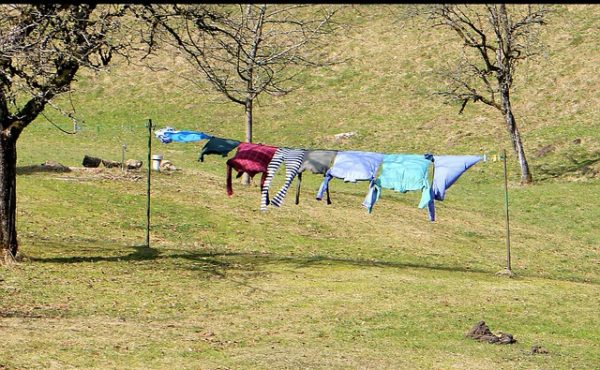Ah, Spring has sprung! It’s time to open the windows and enjoy the fragrant air moving through your house… not so fast though! Springtime weather brings rain, causing humidity at high levels. Our Summers in the Ohio River Valley can be pretty humid as well, making it really hard to lower humidity in your house. Not only does it make moving around uncomfortable and frizzes your hair out, it can also cause some serious problems.
Did you know that if the humidity level in your house reaches over 60%, mold and mildew can potentially grow on your walls, floors, and furniture? If you have hardwood floors, frames, and fittings, excess moisture can cause irreversible damage to them. High humidity is also not great for our health, as it can trigger allergies and other health problems. In this blog, we will talk about ways to help lower humidity and keep it in check!
#1. Monitor the Levels of Humidity IN Your House
If you don’t have a smart thermostat, consider purchasing one. You’ll struggle to lower the humidity in your house if you do not monitor your house’s humidity levels. You’ll also be able to help lower humidity in your house from your phone. You can even buy a standalone hygrometer that will tell you the levels in the space you put it in.
From time to time, check it out, especially if you have the windows open. The EPA recommends a humidity level between 30% and 60% to cut down on the growth of harmful mold. Knowing is the first step to problem-solving!
#2. Pay Attention to the Outside Humidity Levels
This weather makes us want to open all the windows and air the house out. Before you do though, take a second and check the weather. What is the humidity level outside? If it is above 60%, it’s best just to leave the windows closed. If you must have air movement, run a fan instead of the air conditioner. If there is lower humidity, enjoy the fresh air!
#3. Use Exhaust Fans
Ventilation is important! Whenever you take a shower or cook, use exhaust fans, moving the moist air out. If you don’t have a built-in one, post a regular fan by an open window facing the outside.
#4. Use a Dehumidifier to Lower Humidity in Your House Immediately
To lower humidity in your house quickly, use a dehumidifier. This one might be especially true in your basement, as water and moisture just love to hang out there. They aren’t a cheap buy, but will save your basement from mold growth and structural damage that costs you more money in the long run.
#5. Clean your AC Filters
Running air conditioning or heat will help reduce the moisture in the air. Make sure your HVAC filters are clean, as dirty filters will enable humidity.

#6. Dry Laundry Properly
If you must air dry, hang a line outside. Drying your laundry inside will really ramp up humidity levels. If you are using a dryer, make sure it is ventilating outside. If dryer ventilation is making its way inside, it will cause high humidity and even fire, depending on where it’s venting out.
#7. Check Your Foundation/Crawlspace
If you have a dirt floor crawlspace, you’ll need to check for wetness. If the soil is wet, you have a problem. You’ll need to find the source of the water path and stop it. Water should move away from your property.
After you have moved the water away, dry the soil out with ventilation fans and apply a polyethylene ground cover to keep moisture at bay.
Bottom Line
On the flip side, if your house is too dry there are also consequences. Make sure your humidity levels do not go below 30%. Just like with anything in life, there is a balance. The best way to achieve good humidity levels is to monitor it. Your house, energy bill, and health will thank you!
Looking to get your carpets deep cleaned, but don’t want wet carpet for days? Olmec Reflections is at your service! We promise your carpets will be dry, at the most, 12 hours later! We have a drying process as we go, making sure moisture does not stick around very long. Book today!
